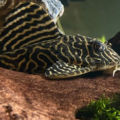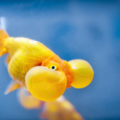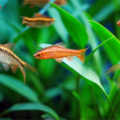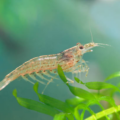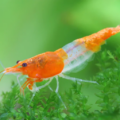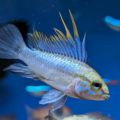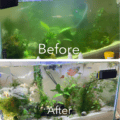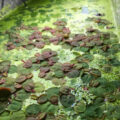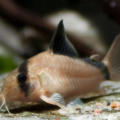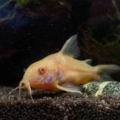Panda Corydoras are a beginner-friendly bottom dweller perfect for your community aquarium. In this article you will be mesmerized by their synchronized swimming as we detail how to care for these lovable pet fish.
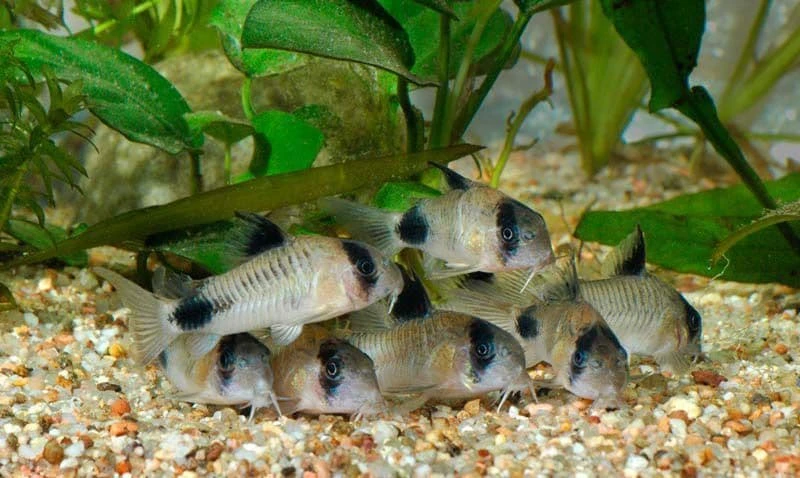
Introduction
Do you wonder what keeping a small, peaceful catfish in your aquarium community tank is like? Well, this Panda Corydoras care guide simplifies the process for you.
Many aquarists love this freshwater bottom dweller for its contrasting black-and-white pattern, calmness, and active scavenging behavior, which makes it the complete aquatic pet. They’ll also beautify your tank by providing a maintenance crew that will happily clean-up your tank.
Author’s Note: Check out the 14 Types of Corydoras Catfish: A Guide to Hardy and Playful Freshwater Fish for our favorite Corydoras picks!
Panda Corydoras are the best fish for community aquariums because of how they school and their peaceful temperament. They thrive in groups of 6 and remain playful and active whether feeding or socializing.
Here’s a breakdown of compatible Panda Corydoras tank mates and why they’re necessary.
Schooling Requirement
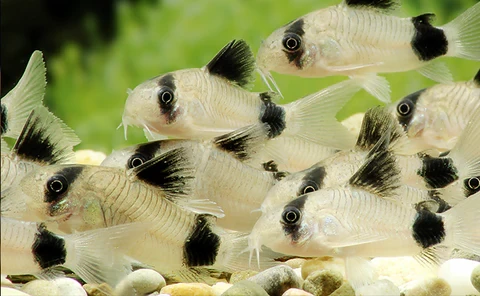
The social behavior of Corydoras in their natural wild habitat led to their preference for schooling, as being around other fish improves their overall well-being. They’ll naturally entertain you with synchronized swimming and interaction with their environment.
Without schooling, Panda Corydoras withdraw into hiding and get stressed and shy, making them depressed or prone to illness.
Tank Mates
You must also choose only compatible Panda Corydoras tank mates like Guppies, small plecos, freshwater shrimp, Tetras, Rasboras, and dwarf cichlids. These species have similar sizes, environmental needs, and personalities that suit your pet’s needs.
Be mindful, however, when introducing new tankmates to remain vigilant as to any aggressive behavior. And be sure to avoid fin-nippers or aggressive fish like large Cichlids, hyperactive bettas, and large goldfish
Setting Up the Ideal Tank for Panda Corydoras
After choosing your Panda Corydoras and their tank mates, it’s time to create ideal aquarium conditions for them. To mimic their natural habitat, corydoras must have a specific tank size with fine, soft sand, gentle filtration, hiding spots, and decor. The details of which will be discussed below.
Tank Size
Mature Panda Corydoras are about 2 inches (5cm) long, so to accommodate a school of six, you’ll need a minimum tank size of 10 – 15 gallons. Follow these parameters for optimal comfort.
Without maintaining proper water parameters, the tank’s water quality can degrade, which can cause a wide range of issues from cloudy aquarium water to illness and mass die off.
| Temperature | 72 – 78℉ |
| pH | 6 – 7.5 |
| Hardness | Soft to moderately hard |
Building the best tank setup for Panda Corydoras depends on how well you combine aesthetics and comfort.
Substrate
Panda Corydoras have sensitive barbels, so they need soft sand or fine gravel substrate to prevent damage.
Decor & Plants
Your Corydoras habitat needs the best freshwater fish tank decor! Use low lighting and enough hiding spots to make them comfortable and exhibit their natural behaviors. Plants like Java Fern and aquarium moss can be used for shade and breeding spots, while coconut shells or smooth rocks form caves.
Feeding Guide: What Do Panda Corydoras Eat?
A Corydoras’ diet and nutrition must support their health and activity levels, so you can’t just rely on their love for scavenging. They survive on an omnivorous diet consisting of animal and plant matter.
Diet Suggestions
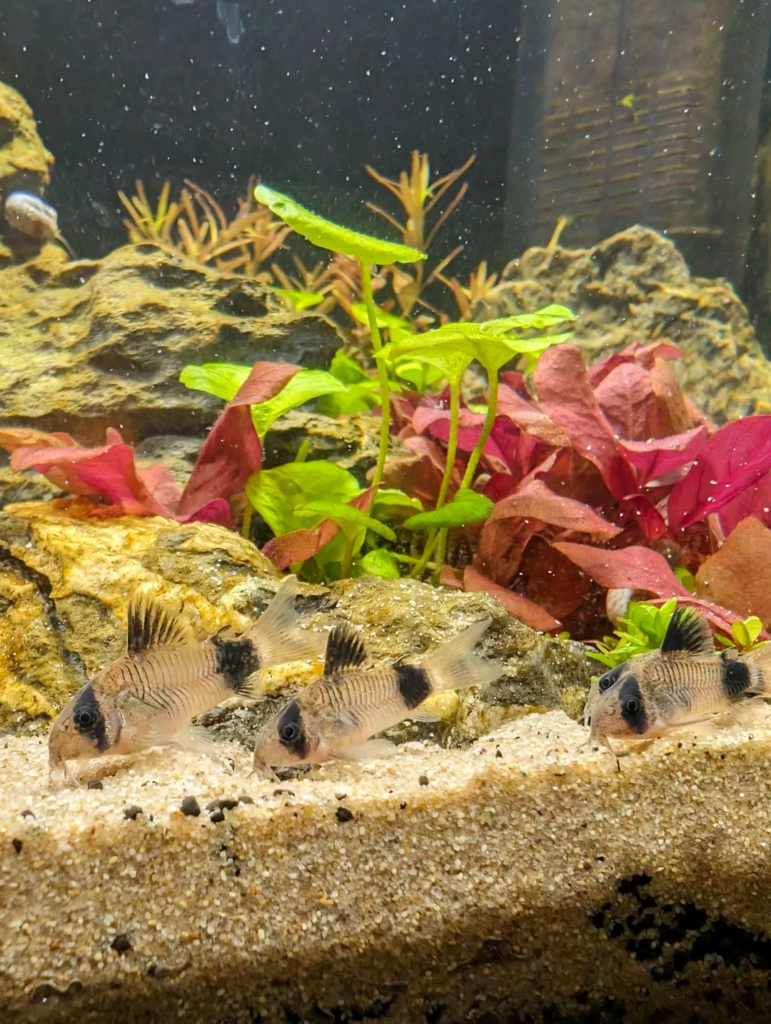
Because you’re feeding bottom-dwelling fish, you must get sinking foods, like algae wafers which my corydoras absolutely love! Then, supplement their meals with frozen and occasional live foods like bloodworms or brine shrimp for protein.
For more on feeding your aquatic pets check out The Ultimate Guide to Fish Food: Pros and Cons & Best Choices!
Feeding Tips
A healthy balance of all essential nutrients is the best food for Panda Corydoras. Feed them staples only twice daily in small portions they can finish in under 2 minutes. Then, add supplements once to twice weekly.
Remove uneaten food after 24 hours to prevent overfeeding and water contamination.
Breeding Panda Corydoras: Encouraging Natural Spawning
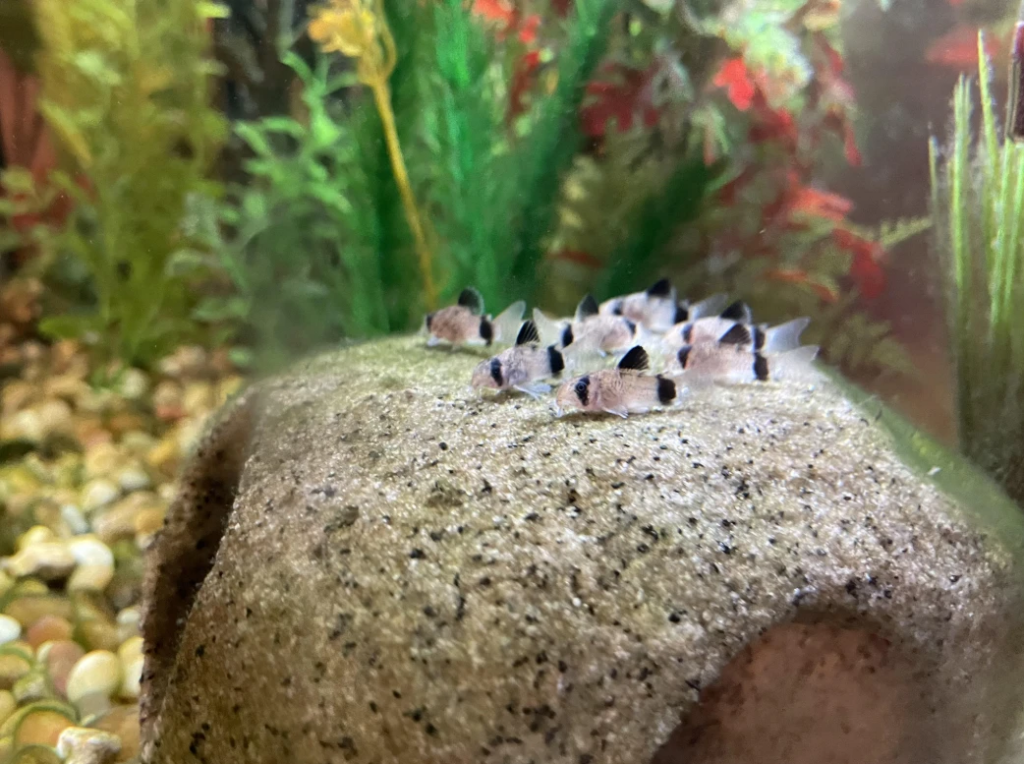
Do you love having this species in your tank? Follow these Panda Corydoras breeding tips to add to your panda community. You’ll need optimal water conditions, diet, and a the following breeding conditions for success.
Breeding Conditions
Panda Corydoras breeding pairs need slightly acidic to neutral water to stimulate breeding. Start the tank at a cool temperature, then make it cooler to trigger spawning. Also, shift their diet to more protein based matter for development. And be sure to pair your breeding Panda Corydoras at a ratio of 2:1 female to male.
| Temperature | Breeding 72 – 75℉ | Spawning 68 – 70℉ |
| pH | 6.0 – 7.0 |
| Hardness | Soft |
| Filtration | Sponge Filter, Gentle Current |
| Plants | Anubias, Java Fern |
| Diet | High-protein |
Egg Laying & Hatching
This freshwater fish’s reproduction process differs slightly from the common egg-laying then fertilization method. Female Panda Corydoras hold their eggs near their pelvic fins for fertilization from the male before attaching them to the tank surface.
They lay between 20 – 100 eggs at this stage, after which you must remove adult fish from the tank or move the eggs but the adults are a bit easier to move. If the eggs are not separated from the adult fish it is likely they will be eaten, even by their own parents.
Next, we discuss how to hatch Corydoras eggs! Using the breeding parameters mentioned earlier, you’ll then adjust the tank’s temperature to a warmer degree slightly. And within 3 – 5 days, depending on the warmth, your fry will emerge.
The final stage is fry care, where you’ll feed your young pets infusoria and liquid food first, then finely crushed baby brine shrimp. Consistently change their water, ensure pristine conditions while the fry grows, and observe their healthy closely.
Keeping Panda Corydoras Healthy: Common Issues & Prevention
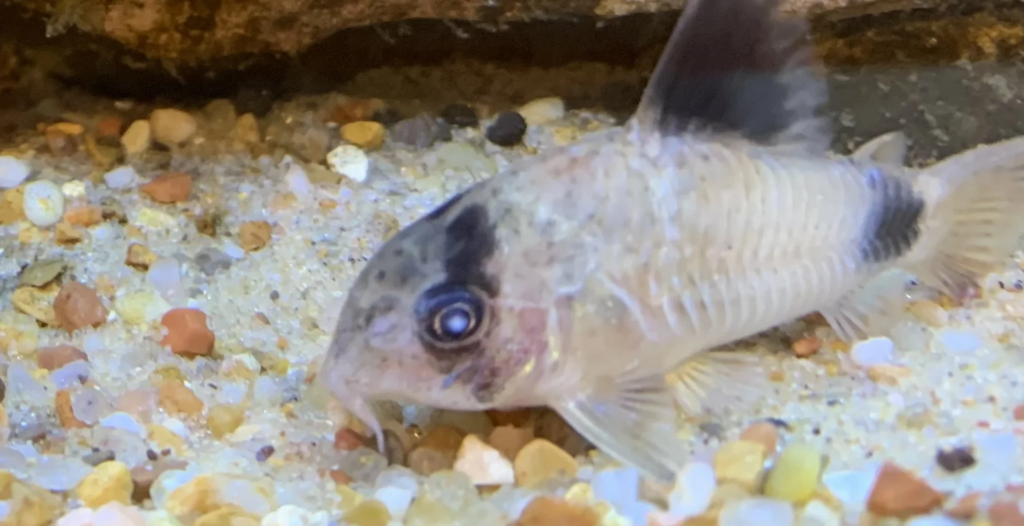
Common Panda Corydoras’ health problems center around poor maintenance. So, providing clean water, a balanced diet, and stress-free conditions helps prevent freshwater fish disease. But if you make a mistake, note these common issues.
Common Issues
- Barbel Erosion: Improper diet and contaminated water affect your pet’s physical appearance, including that of its barbels. Improve their diet and change 30% of the water.
- Poor Water Quality Sensitivity: Check the water parameters for optimal levels.
- Stress-related Illnesses: Ensure their tank mates are compatible.
Preventative Care
This guide contains the best care practices for Corydoras, from performing regular water changes to stabilizing their conditions, designing a safe environment with smooth substrate, and keeping compatible companions only.
All you have to do is follow these tips to reduce the risk of illness.
How Long Do Panda Corydoras Live? Extending Their Lifespan
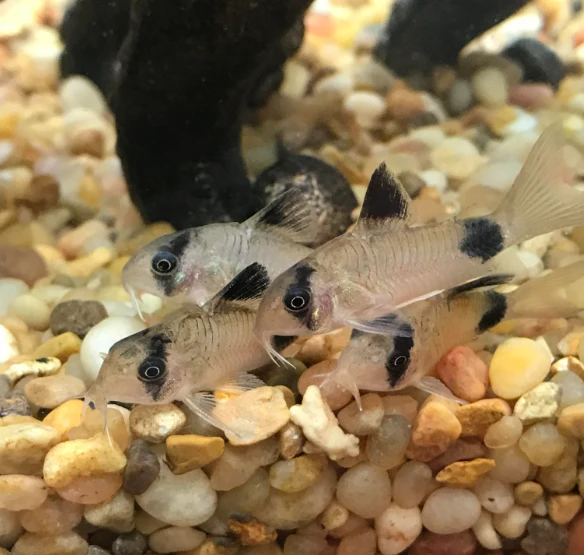
The Panda Corydoras lifespan typically lasts 5 – 10 years with proper care. However, their longevity depends on key factors that impact their well-being, like water quality, diet, and social grouping.
Lifespan Factors
Ensure you’re giving your pets the best possible care at all times. Scroll back up for details on the right conditions and tips on how to keep Corydoras healthy.
Care Routine
Freshwater fish long-term care consists of consistent tank maintenance, high water quality, and observation of your pets for signs of illnesses.
Conclusion
So, to answer the first question in this guide, “Why keep Panda Corydoras?” – choose this species because it’s the ultimate bottom-dweller. They make excellent community tank fish due to their friendly temperament, ease of care, and playful nature.
If this is your first attempt at keeping Panda Corydoras with other companions, you can scroll back up to see some community tank fish recommendations. Remember that proper grouping influences their natural social behavior, and they also need optimal tank conditions with suitable feeding routines.
Reading this review is the perfect introduction to this beginner-friendly aquarium fish, so you’re on the right path! We can’t wait to hear about your experience in the comment box below.

